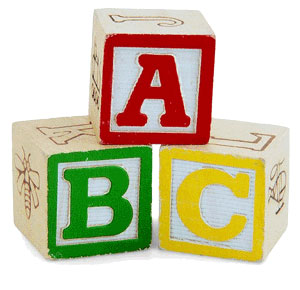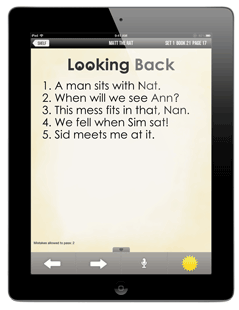Create your universal access subscription and have unlimited access to the entire Reading for All Learners Digital Edition.
$5.99/mo
Get 30 days for free using the code 30FREE
Then access your subscription the following ways:
or
Online Login
Digital Subscription Edition Features
- Use your subscription on any phone, tablet, computer or chromebook.
- Easy-to-use Audio-based Prompts and Modeling of Words and Sounds
- Read to Me Feature
- Tap Any Word to Hear Pronunciation
- Audio Record and Playback Student Reading
- Adjustable Text Size
- Teacher Edition - Share your subscription with up to 40 students
- Aligned with Science of Reading
- Research-Proven Skill Introduction Sequence
- Engaging Artwork and Storylines
- Gradual, Systematic Introduction of New Material
Customizable Controls
- Turn Off/On Audio Cues
- Turn Off/On Read to Me
- Turn Off/On Audio Recording
- Hide/Unhide Story Pictures
Reading Skills Addressed
- Phonemic Awareness
- Alphabetic Principle
- Decoding
- Oral Reading Fluency
- Reading Comprehension

The Reading For All Learners Applications were created thanks to
a generous grant from the National Science Foundation.

Evidence-Based Reading Instruction
The Reading for All Learners program has a long history of instructional design and development, field-testing, and evaluation. The curriculum is built on a solid foundation of reading research and evidence-based instructional strategies. In particular, they are well aligned with the recommendations of the National Reading Panel and the Five Big Ideas of Reading which form the building blocks for reading skills.
Reading for All Learners provides systematic and explicit instruction in phonemic awareness and phonics. Regular assessments promote reading fluency and accuracy, which are necessary to demonstrate mastery of reading skills before continuing to the next five books in each subset of lessons. The development of these foundation skills naturally lead to improvements in reading comprehension.
The importance of these critical beginning reading skills is supported by an extensive body of research. The research has clearly and unarguably demonstrated the relationship between improved outcomes for at-risk readers and explicit instruction in these types of skills. A major sequence of each lesson includes the practice of sounds and words in isolation. These same sounds and words are then used in the narrative story. Additionally, the connected text stories are made up exclusively of words the learner has had explicit instruction in decoding. This level of decodability helps boost learner self-confidence.
The introduction of new sounds and words is tightly controlled across stories to increase the likelihood of student success. Studies evaluating the efficacy of phonics instruction consistently find a connection between explicit, systematic phonics instruction and improved reading skills. The learners who typically benefit the most from this type of instruction are struggling readers. The Reading for All Learners program is designed for preschool through third grade students reading on grade level, and struggling students through sixth grade.
What people are saying about Reading the All Learners iPad Apps:
“This is the best app for kids learning to read.”
“The app works great. The voice for reading the story is pleasant and readers are able to sound out words. Readers are also able to record themselves reading a page. The books are well thought out, and build upon each other well.”
“My kids love reading the books in the ipad app! It's the best of the reading apps for teaching my kids! The stories are engaging and my kids love the characters. I can't wait to start on set 2!”
“I strongly recommend this program if you want to teach your child to read.”
“The IPad version is awesome! I have a son on the autistic spectrum & he looooves these. He wants to read the books & record his voice all day long.”
“This is a great ipad app for kids learning to read. It is so handy to have the books available on the iPad now. We love it!!”
“Awesome for young readers - I have had these in my children's classes all through their elementary years. They are great since they bring new words in each book and the kids love the pictures.”
Powerful Instruction in a New Format The Reading For All Learners iPad application is the result of a line of effective reading instruction research which began more than 30 years ago and continues today. Academic Success For All Learners is proud to introduce the same powerful content in an entirely new form. The initial download is free and includes fully-functional access to 12 books.
The Control Panel The control panel allows you to tailor the application supports and interactive features based on learner needs. Access the controls used to customize the application for your learner using the small gear icon located on the top right of the bookshelf. Use the Learner Management section to track the progress of multiple learners, access and share saved audio recordings, or award completion badges. Use the pronunciation guide to hear examples of all letter sounds used in the program.
Lesson Components

Sound Practice Our first and most important task is for the child to learn the sounds each letter can make. This skill is crucial for reading success. Each lesson begins with practice of previously learned letter sounds (phonemes) and the systematic and gradual introduction of new sounds. The selection of letter/sound correspondences in the early books makes the task of blending sounds to read a word as clear as possible. For example, /m/ and /s/ are introduced immediately, as these sounds can be blended seamlessly. The introduction of plosive sounds such as "p" are delayed, as these distort when blended in a word. Learners experience immediate success, with only 5 letters and sounds in the first book. Additional letter/sound correspondences are introduced slowly in subsequent books. Each new sound is encountered at least five times in that book and at least five more times in the next five books. Letters such as “b, d, p, and q,” which many children have difficulty discriminating, are widely separated in the instruction.
Word Practice In the word practice section our goal is for the child to learn to blend sounds into words. Learners may touch any word in the story or in the word list practice sections and the word is read to the learner two ways. First, the word is read slowly, using a precise pronunciation based upon the most common sound each letter makes; then the word is read normally. Word recognition is always practiced through decoding. The books at the beginning of the series are illustrated with a cast of imaginary animal characters with whom children readily bond. The illustrations contain very few cues regarding the words or sentences. Words that look very much alike are juxtaposed in the same book so that the pupil cannot generate the word by using only the initial letter, e.g., “Mat, Mit, it” and “sit, Sis, is.
 Reading The Story The stories are the heart of the Reading For All Learners program. Here, learners practice the skills introduced in the sound and word practice sections. The real power behind this program is the precisely controlled vocabulary of the stories. Learners will never meet a word they haven’t had a chance to practice. The controlled vocabulary helps improve confidence and motivation.
Reading The Story The stories are the heart of the Reading For All Learners program. Here, learners practice the skills introduced in the sound and word practice sections. The real power behind this program is the precisely controlled vocabulary of the stories. Learners will never meet a word they haven’t had a chance to practice. The controlled vocabulary helps improve confidence and motivation.
Audio Recording Teachers have used tape recorders and digital recording devices and encouraged learners to record themselves reading and then listen to the recordings. In the Reading For All Learners application, a simple sequence was devised to record the reading of each page and then play back the recording for the reader. This recording may be listened to in comparison to another embedded support; the “Read to me” function. Thus providing the learner a model of fluent reading with lots of expression.
Text Highlighting and Audio Synchronization An important addition to the “Read to Me” support is the precise synchronization of text highlighting and narration. As the text is read by the narrator, the words on the page highlight individually as they are read. Additionally, the sounds and words practiced before each connected text story may be tapped by learners and highlight in sync with a narrated audio model. Related to the “Read to Me” feature is the “Touch Words” support. Learners may touch any word in the story or in the word list practice sections and the word is read to the learner two ways. First, the word is read slowly, using a precise pronunciation based upon the most common sounds each letter makes, then the word is read normally.
Coming Attractions At the end of most stories is a brief section similar to the sound and word practice sections. This is the first place students are introduced to new sounds and words they will meet in the next story.

Looking Back Assessments
Ensuring Success with Formative Evaluation The Looking Back assessments are a critical part of Reading For All Learners. These short passages are carefully designed to determine if the learner has mastered the skills needed to move on. These assessments are included in every fifth or sixth book. At the bottom of each Looking Back are the requirements for achieving mastery. The criteria listed requires the child reach 95% accuracy in decoding along with an increasing rate of fluency. These embedded progress monitoring assessments ensure mastery is achieved before advancing to new material.
Common Questions
Which book should I start with? By reviewing the first few books in each set, you may be able to identify a good starting point for the child you are working with. Alternately, you can find the placement assessments for Reading For All Learners online here.
How many times should I read each book? While there is no exact rule, most learners should read each book twice. Some learners may need to read each book more than twice. Conducting the Looking Back assessments will help determine if the learner has reached the needed level of mastery. If a child is consistently not reaching mastery on the Looking Back assessments, they should read each book several times before moving on.
What are the differences between the print books and the books in the iPad App? In terms of the lesson content and instructional sequence there are no differences. In fact, the page numbers used in the application correspond exactly with those in the original print edition and the new color print edition. The primary differences are the addition of interactive features and the controls available to tailor supports and prompts to student needs.
How do I know if a child is ready to begin this program? Generally, children are ready to begin Reading For All Learners if they know 15 or more of the letter sounds in the alphabet. It is helpful also if the learner understands that text is read from left to right and can blend two or more sounds together, i.e. sssaaammm.



